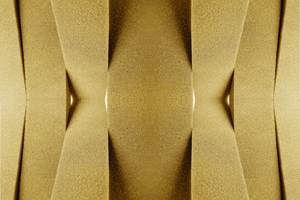Laser Scanning Saves Time and Money for Digitizing Parts and Molds
Blow molded product designers and moldmakers are finding laser scanning to be a fast, accurate, and cost-effective method to replicate molds and create new designs for highly contoured and complex parts such as beverage bottles.
Blow molded product designers and moldmakers are finding laser scanning to be a fast, accurate, and cost-effective method to replicate molds and create new designs for highly contoured and complex parts such as beverage bottles. In blow mold manufacturing, laser scanning has emerged as an effective tool for digitizing models or prototypes, finished parts, and mold cavities. It also affords an advantage over coordinate measuring systems because it can acquire millions of data points quickly.
Reverse engineering
GKS Inspection Services, div. of Laser Design, Inc., is one of the leading laser-scanning service bureaus in North America. The company has worked closely with many plastics companies to provide reverse-engineering services whereby a 3D computer model is created from digital measurement of a physical model, finished part, or mold cavity. Laser scanning is useful in instances where manufacturers simply want to produce a new mold for an existing bottle that was created without the use of CAD. For inspection of finished parts, laser scanning is also used to determine whether parts match the original CAD model, product specifications, and/or regulatory requirements.
Uniloy Milacron, a supplier of blow molding equipment and molds, adopted laser scanning to overcome the limitations of coordinate measuring machines (CMMs), according to Jim Janeczek, Uniloy product design engineer. A CMM utilizes touch sensors to record each point along a surface. It is a much slower approach that provides much less data than laser scanning, according to GKS.
As blow molded part and tool geometries become more complex, the number of data points required for accurate measurement has increased exponentially. According to GKS, millions of points are required to accurately model complex bottle geometries. For such parts it now takes days to capture points one by one with CMM. In addition, CMM units are quite expensive, costing up to $250,000.
More data faster
Laser scanners project a line of light onto surfaces while cameras continuously triangulate the changing distance and profile of the laser scan line as it sweeps over the contours of the object. The laser probe has two sensors that can record up to 50,000 data points per second compared with a touch probe-based CMM that records about 1 point/sec. As a non-contact system, laser-scanning results are independent of the skill of the operator.
The first part that Uniloy sent to GKS for scanning was a dairy bottle for which the customer wanted a new mold. The 16-oz bottle was too soft to digitize accurately with a CMM touch probe.
GKS’s laser scanner generated a “point cloud” of millions of data points with each point accurate to within 20 microns. The surfaces generated from the point cloud were accurate to within 0.004 in., according to Larry Carlberg, GKS service bureau manager.
The point cloud was converted to a CAD surface model. The entire process took two days and cost less than $1500. “Laser scanning substantially improved the accuracy with which we can duplicate our customer’s geometry, and the cost and lead time of this new technology is substantially less than the contact-probe CMM technology it replaced,” says Uniloy’s Janeczek.
Uniloy has sent about a dozen other physical models or finished containers to GKS for digitizing. Another example was a 2-liter dairy container that was created by a modeler using hand tools. The model had many subtle details that were invisible to the naked eye but could be felt with bare hands. Uniloy was able to verify the details by comparing the CAD model to the physical model.
Related Content
Upgrade to Accelerated Artificial and Natural Weathering Testing
NPE2024: Atlas S³T system is designed for the company’s Weather-Ometer Ci4400 and Ci5000 instruments.
Read MoreBrabender GmbH Bought By Austrian Measurement Company
Leading metrology company Anton Paar buys 100-year old firm, known in the U.S. as C.W. Brabender.
Read MoreTracing the History of Polymeric Materials -- Part 30: Polyurethane
In the world of polymers, polyurethane chemistry is probably the most versatile. This a resulted in a wide range of products made from these materials and given the industry the flexibility to respond to the progressive march of regulatory concerns.
Read MoreHeight Gauge With Added Features and Accuracy
NPE2024: Mitutoyo America’s LH600F features a touchscreen interface that enables easy and intuitive operation.
Read MoreRead Next
Beyond Prototypes: 8 Ways the Plastics Industry Is Using 3D Printing
Plastics processors are finding applications for 3D printing around the plant and across the supply chain. Here are 8 examples to look for at NPE2024.
Read MoreFor PLASTICS' CEO Seaholm, NPE to Shine Light on Sustainability Successes
With advocacy, communication and sustainability as three main pillars, Seaholm leads a trade association to NPE that ‘is more active today than we have ever been.’
Read MorePeople 4.0 – How to Get Buy-In from Your Staff for Industry 4.0 Systems
Implementing a production monitoring system as the foundation of a ‘smart factory’ is about integrating people with new technology as much as it is about integrating machines and computers. Here are tips from a company that has gone through the process.
Read More











